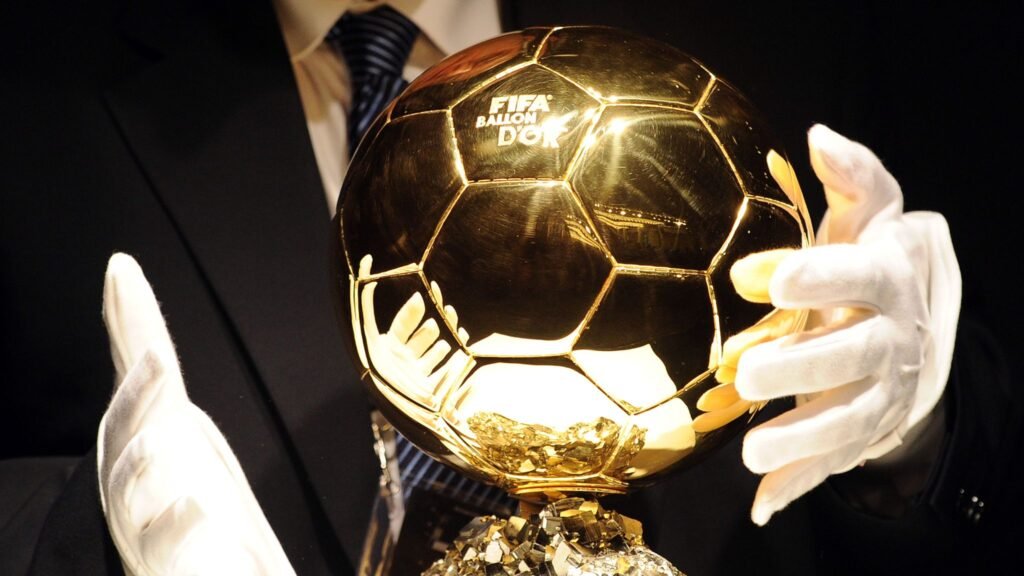The Ballon d’Or, a prestigious award recognizing the best player in men’s football, has a counterpart specifically dedicated to the women’s game: the Ballon d’Or Féminin (French for “Women’s Ballon d’Or”).
This award shines a spotlight on the exceptional talent and achievements of female footballers, inspiring a new generation and celebrating their contributions to the sport.
A History in the Making: From Humble Beginnings to Global Recognition
The story of the Women’s Ballon d’Or is relatively young compared to its male counterpart. While the men’s award dates back to 1956, the first Women’s Ballon d’Or wasn’t presented until 2018.

This delay reflected the historical gender disparity in football’s recognition and resources. However, with the growing popularity of women’s football, the need for a prestigious award dedicated to female players became undeniable.
The inaugural Ballon d’Or Féminin ceremony took place in December 2018, with Norwegian forward Ada Hegerberg receiving the first-ever award. Since then, the award has continued to gain recognition, becoming a coveted symbol of excellence in women’s football.
The Selection Process: Recognizing All-Around Excellence
The Ballon d’Or Féminin award is determined through a voting process involving a jury of selected journalists from the top 50 nations in the FIFA Men’s World Ranking. These journalists vote based on a player’s performances throughout the previous season, considering various factors:
Individual brilliance: Technical skills, dribbling ability, passing accuracy, and goal scoring prowess all play a role in the evaluation.
Team success: A player’s contribution to their club and national team’s achievements is also considered.
Fair play and sportsmanship: The award recognizes not only on-field talent but also a player’s conduct and attitude.
This multi-faceted approach to the selection process ensures that the player crowned Ballon d’Or Féminin embodies not just exceptional talent but also leadership, sportsmanship, and a significant impact on the game.
Beyond Individual Glory: The Impact of the Women’s Ballon d’Or
The Women’s Ballon d’Or serves several crucial purposes within the world of women’s football:
Elevating female footballers: By recognizing their achievements on a global stage, the award increases the visibility of female players and inspires young girls to pursue footballing careers.
Highlighting the importance of women’s football: The Ballon d’Or Féminin ceremony generates significant media attention, promoting women’s football to a wider audience and attracting sponsorships and investment into the sport.
Fueling healthy competition: The desire to win the coveted award fosters a competitive spirit among players, pushing them to constantly improve their skills and raise the overall level of play within the women’s game.
Champions of the Game: Past Winners and Rising Stars
Since its inception, the Women’s Ballon d’Or has seen several exceptional players take center stage. Here’s a glimpse at some of the past winners and rising stars:
Inaugural Champion (2018): Ada Hegerberg (Norway) – a prolific goalscorer known for her powerful strike and leadership qualities.
Two-time Winner (2021, 2022): Alexia Putellas (Spain) – a midfield maestro with exceptional vision, passing skills, and a knack for scoring crucial goals.
Rising Star (2023): Aitana Bonmatí (Spain) – a versatile player with impressive dribbling skills and a key contributor to Barcelona’s success.
Other notable nominees: Sam Kerr (Australia), Wendie Renard (France), Megan Rapinoe (USA), Christiane Endler (Chile).
These are just a few of the talented players who have left their mark on the Women’s Ballon d’Or. Each year, a new generation of footballers emerges, pushing the boundaries of the sport and vying for the recognition of this prestigious award.
FAQs
What is the Women’s Ballon d’Or?
The Women’s Ballon d’Or, also known as the Ballon d’Or Féminin, is a prestigious annual award presented to the best female footballer of the previous season. It’s the women’s counterpart to the renowned Ballon d’Or awarded to the best male player.
When did the Women’s Ballon d’Or begin?
The award is relatively new, established in 2018. Ada Hegerberg of Norway had the honor of being the first-ever recipient.
How is the winner chosen?
A panel of journalists from top footballing nations votes for the winner. These journalists consider a player’s individual performance, their impact on the team’s success, and their overall sportsmanship throughout the season.
Who is the current Women’s Ballon d’Or holder?
As of today (March 16, 2024), Aitana Bonmatí of Spain holds the title. She received the award in October 2023.
Who are some past winners of the Women’s Ballon d’Or?
Here are some notable past winners:
Ada Hegerberg (2018)
Megan Rapinoe (2019)
Alexia Putellas (2021, 2022)
Are there any interesting facts about the Women’s Ballon d’Or?
Alexia Putellas is the only player to win the award twice (2021 & 2022). There was no award given in 2020 due to the COVID-19 pandemic.
The award ceremony is a glamorous event held in Paris, France.
The Women’s Ballon d’Or is a significant step towards recognizing and celebrating the incredible talent in women’s football.
Beyond the Award: Looking Forward to a Brighter Future for Women’s Football
The Women’s Ballon d’Or is a significant milestone in the evolution of women’s football. However, there’s still a lot to be done in terms of achieving true equality in the sport. Issues like unequal pay, limited media coverage, and lack of infrastructure in certain regions remain hurdles to overcome.
The continued celebration of the Women’s Ballon d’Or alongside ongoing efforts to address existing disparities can pave the way for a brighter future for women’s football.
With increased recognition, opportunities, and investments, the sport can attract more talent, elevate its quality, and inspire fans worldwide.
To read more, Click Here